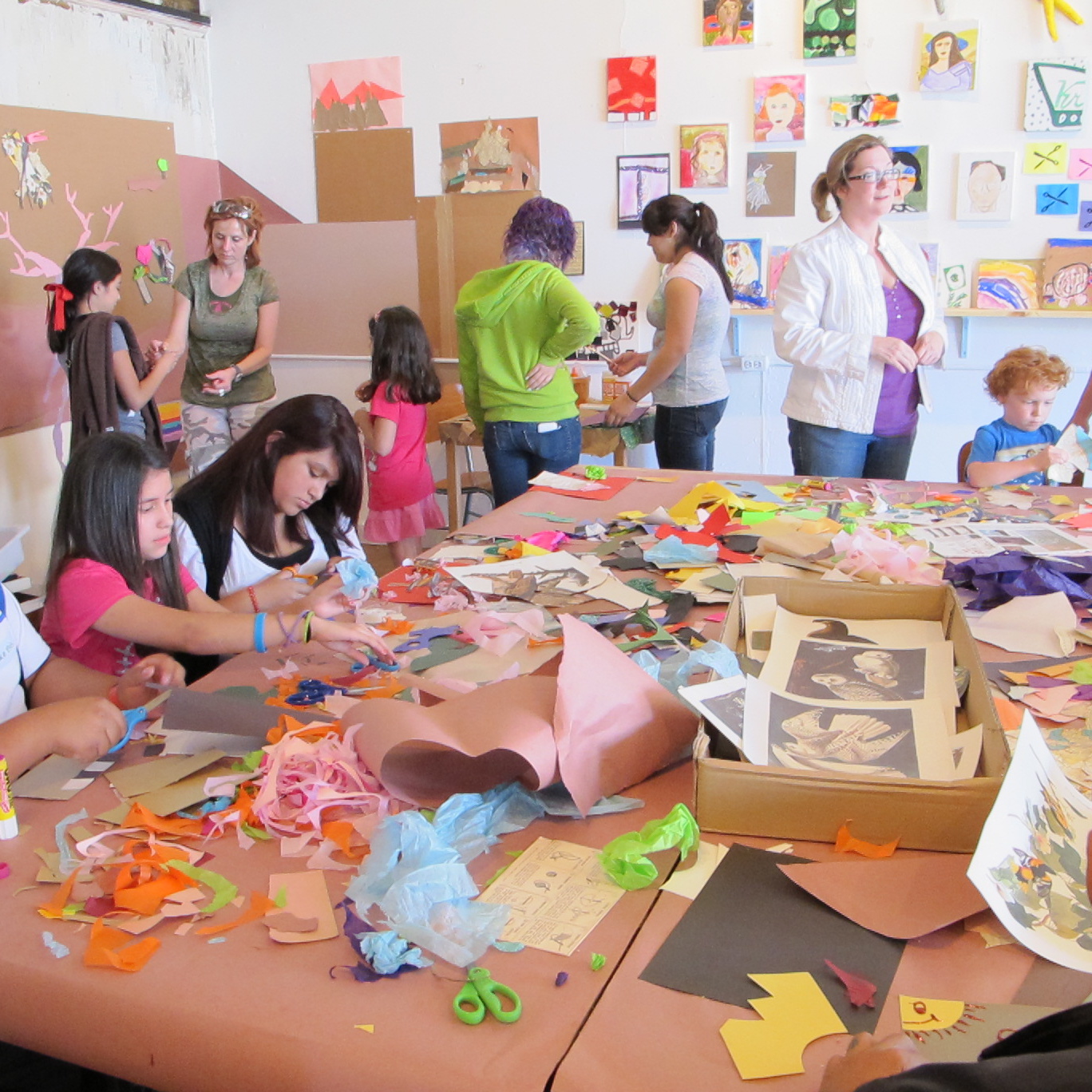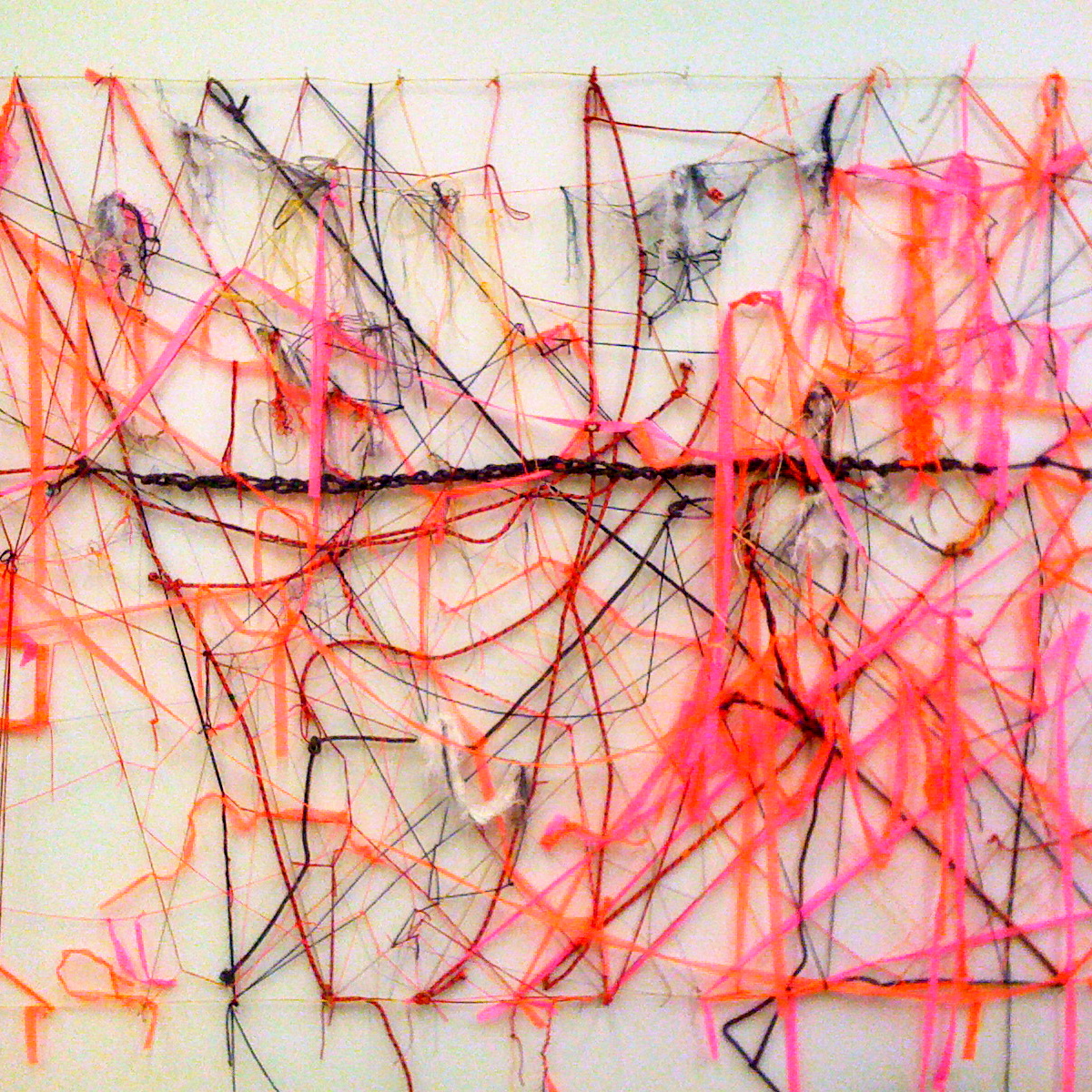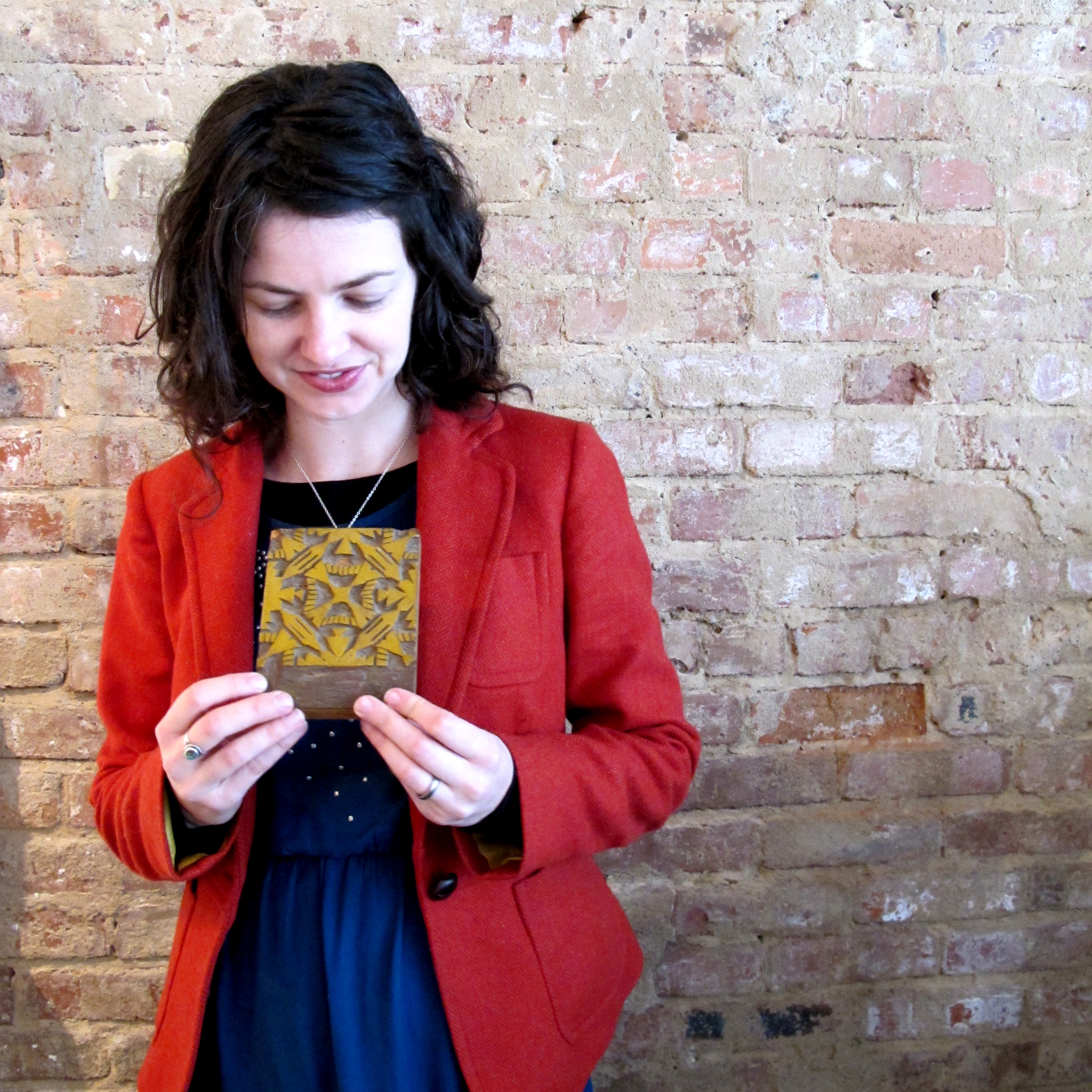Every six months or so, our department gets away for a day-long retreat. It’s an opportunity for us to reflect, look ahead, and spend time together outside of our typical work spaces. We’ve been fortunate to hold two of these retreats at Oil and Cotton, a creative space in Oak Cliff that offers a variety of multidisciplinary art classes, workshops, and camps. Opened in September 2010, the space is managed by Shannon Driscoll and Kayli House Cusick.
How did you get started?
Shannon: Kayli and I met during a volunteer project in our neighborhood called The Better Block. The project took an area of the neighborhood, where Oil and Cotton is now located, and made temporary changes to the block that we felt as a community would make it more pedestrian-friendly. We met at one of the first meetings, where we both raised our hands and said we were interested in doing a pop-up art studio for the community.
After that, Kayli and I started planning, and we created Rock, Paper, Scissors. We used a warehouse on Seventh Street, asked for donated materials from friends and family, and set up a base of volunteers for two days during the Oak Cliff Art Crawl. We set up a long, long table full of art supplies and materials, and had volunteers lead people through creative projects, from collage to stenciling to drawing and painting. All the volunteers were artists or had different creative backgrounds from Oak Cliff and beyond. The space was packed with crowds for the entire weekend. It was really wonderful to see people of all ages and backgrounds and from different parts of the neighborhood and of Dallas, sitting together and making things side by side.
After the festival, people in the community approached us and said they didn’t want us to stop what we were doing. The gentleman who owned the warehouse had a building that came up for rent, and we talked to him and decided to go for it. Kayli and I both come from art-related backgrounds, and we brought our experiences as artists and educators to what we’re doing.
What did you do before opening Oil and Cotton?
Shannon: I had a private conservation practice – I’m an art conservator. I had also been teaching classes on the side at my studio and at the Dallas County Jail with Resolana – I’m a board member for Resolana as well.
Kayli: I wrote curriculum for my mother, who had a business for about twelve years off and on. It was something we did as a family growing up; she was an art teacher, and she made elementary art curriculum for Coppell ISD. When she opened a business with my sister, I was a music composer at UNT, and it ended up being the perfect fit. I also taught piano lessons privately out of my house forever and ever. Then I had a child; when I met Shannon, my daughter was two, and that’s what I was doing. I had always had the idea on my backburner, if I could ever figure out how to combine all the loves I had, and have a work environment my child could be in, I could do everything I love to do. It all came together when I met Shannon and she said, of course we can do that.
What has the community response been to Oil and Cotton?
Shannon: It has been wonderful. A day hasn’t gone by when someone has not come in to ask how they could help us or how they could donate materials to us or asked us for another class that we’re not offering. People feel involved in what we’re doing; they’ve seen us grow from something very small to something more permanent and a part of their neighborhood. I think that’s exciting for people. They feel invested in what we’re doing, and they want to help us. We wouldn’t have been able to do what we’ve done in this amount of time without their help. People have donated a box of white tiles, which we used to create backsplash for the sink; corks; fabric; paper… we always find a way to use what we’re given. We’ve had people come to us and say, “I have this idea for a project, and I want to see it happen”. For example, an architect led a two-week architecture workshop for teens, and they created a deck for us. All the materials were donated, and architects came and talked to the teens everyday. We’ve had the most amazing, talented interns that support our education outreach, and we’ve had teachers who help select children in the neighborhood who might not be able to afford classes here, and we give them scholarships. We rely on these neighborhood teachers to send us people who need help, and who will benefit from coming to Oil and Cotton.
What has been your most successful or fun class?
Kayli: For me, it’s songwriting camp. I got to work with other musicians – I worked with David Daniels, who is a touring indie rock musician; Floramay Holliday, a touring country music singer; and Mikal Beth Hughey, a jack-of-all-trades who plays in some bands locally and teaches piano and voice in her studio at The Kessler Theater. It was a weeklong summer camp. The kids came in and formed bands; they collaborated to write a song together, rehearsed it like crazy, recorded it, made a CD, and had a performance at the end of the camp. They had to come up with merchandise and think about the visual aspects of what they were doing, in the form of a band t-shirt, poster, and CD cover. We had a photographer take pictures of them for their CD’s. It was just awesome fun for me as a musician; I got to learn from other musicians how they approach writing. We occupied the whole space, with kids rehearsing in every room as loud as they could be. The kids could be themselves without a lot of adult interference.
We also got to work with the DMA on the Mark Bradford exhibition. That was very special – I am a big fan of his work. We were part of a meeting with people from Oak Cliff to bring some Oak Cliff blood into the situation. We volunteered to work with Nicole and have our teen class to do this interactive project during a Late Night. That was really fun. What I liked about that was all the ages and different people; we had senior citizens to little kids, and it was a lot like Rock, Paper, Scissors. Everyone brought something different to it. By the end of the night, the teens were destroying the project and making little sculptures out of it. It was originally a weaving, and it became sculptural.
Has anything surprised you since the opening of Oil and Cotton?
Kayli: The amount of generosity people have shown in our community, and the enthusiasm of the art community here to try and make Dallas good. The amount of interns and volunteers we get because they want to see us succeed and want to be a part of it. People understand this is art in social practice, that we’re making this happen for real. It’s been a surprise to us that something that is natural for us to be doing makes people think “Oh hey, I can do my thing and survive. If I don’t spend too much money and work my tail off, I can survive”. It helps to have the support of our neighborhood, and we could never have made it without that support. People offer to paint walls, dig the dirt in back of the building. My mother also gave us a ton of furniture and art supplies.
What is one of your most treasured handmade possessions?
Shannon: I am a collector of art, and art has always been a part of my life. My dad is a junker; I grew up going to yard sales, estate sales, and junk shops with him in Baltimore, so I’ve collected things over the years. I’ve got a collection of drawings that a little girl made from 1908. She must have done them in her classroom, because there is a drawing of the back of the head of the child sitting in front of her. There is also a drawing of a doll she titled “Mr. Eat-a-Pie”. They are beautiful pencil drawings, and she watercolored some of them as well. She made a little portfolio for them that says 1908 along with her name.
Kayli: A little woodblock that was my grandmother’s. She was an Okie, and she had an amazing collection of all kinds of Native American things. She had this little tiny wood block, around five by seven inches, with mustard yellow paint remnants on it. I’ve always wanted to do something with it. It has a sort of a tesellation or radial design with teepees and geometric shapes that come out from the center. It looks like an old lino; you can see all the different colors used to print it, like red and green under the yellow. You know it was used a lot, but you don’t know what for. It says “20 cents” really big on the back.
Kayli: We would love to see more teachers getting together here. We’d love for people to know that if they have a group and want to do a special technique workshop, we’ll either teach it ourselves or find someone else to teach it. This is great space for retreats. (*Editor’s note: we agree!)
Melissa Nelson
Manager of Teaching in the Community



